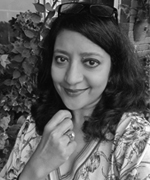First Person | Mental Ghettos
 A few years back I had the opportunity to visit India-Pakistan border in Jaisalmer sector. The Border Security Force had very kindly allowed the FORCE team to see a few border outposts along the fence. Before the fence came about, this sector was notorious for smuggling and drug-trafficking. But after the completion of the fence such incidents were reduced considerably. While this certainly was a good development, it also implied that the biggest challenge for the men posted in those areas was fighting boredom. The sense of ennui was so great that in two days that the FORCE team spent there, it had started rubbing on us as well, despite the supposed romance of golden sand dunes and patrolling on camels.
A few years back I had the opportunity to visit India-Pakistan border in Jaisalmer sector. The Border Security Force had very kindly allowed the FORCE team to see a few border outposts along the fence. Before the fence came about, this sector was notorious for smuggling and drug-trafficking. But after the completion of the fence such incidents were reduced considerably. While this certainly was a good development, it also implied that the biggest challenge for the men posted in those areas was fighting boredom. The sense of ennui was so great that in two days that the FORCE team spent there, it had started rubbing on us as well, despite the supposed romance of golden sand dunes and patrolling on camels.
Given this, it was understandable that the BSF officers interacting with the FORCE team were hard-pressed to help us get an interesting story. When all else failed, one of the officer tried the last resort. He raised the sceptre of terrorism. “One of the growing problems in this area is terrorism,” he said.
“These are border areas, very close to Pakistan and there is a substantial Muslim population here.” So? He grappled for a more convincing argument, “In the last few years, the number of madrassas in this area has doubled. This is a matter of concern.” Those were the days when the notorious Pakistani madrassas were hitting the headlines as the cradle for the Taliban. Somehow the word madrassa had become interchangeable with terrorism. So the insinuation by the BSF officer clearly raised my hackles, and I couldn’t resist challenging him. But if there has been an increase in the Muslim population, why should we be surprised that there is a corresponding increase in the madrassas?, I had countered. Since madrassas or the challenges posed by terrorism was not central to the article on BSF’s deployment in Rajasthan, the argument didn’t go any further.
I had till recently maintained that madrassas should not be viewed with suspicion; that they should be strengthened and modernised as an institution because for a large number of impoverished Muslim children they are the only means of education. Run largely on charity, most madrassas not only provide food to the students but in many cases accommodation as well. The fact that some of them had started responding to changing times by incorporating secular subjects like computers and mathematics in their curriculum was seen as the step in the right direction and became subject of several feature articles, including in FORCE. Rows of young boys hunched over the copies of Quran Sharif made interesting photographs.
Subscribe To Force
Fuel Fearless Journalism with Your Yearly Subscription
SUBSCRIBE NOW
We don’t tell you how to do your job…
But we put the environment in which you do your job in perspective, so that when you step out you do so with the complete picture.








